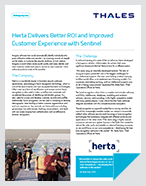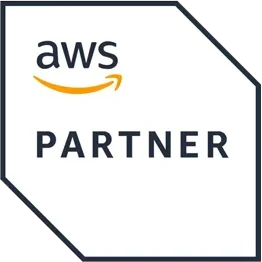What is Enterprise IT Modernization?
Everyone knows the old saying “If it ain’t broke, don’t fix it.” But while this adage applies to many of life’s situations, in business, just because something isn’t broken, doesn’t mean it’s working. This rings especially true for IT systems.
When something seems to be working well enough, even the idea of making costly and time-consuming upgrades can be off-putting. However, far too many businesses are living in the past and are being held back from reaching their full potential by outdated software systems. That’s where enterprise modernization - upgrading and updating software systems - comes in.
Hanging on to software that should have been updated long ago can cause a range of problems including low system performance, outdated functionality, and support issues. Limping along with an older system can also cause problems for customers down the line. That’s where the downside of outdated technology and the benefits of digital modernization become even more clear.
Top Reasons to Modernize Your Legacy Systems
There are many reasons to modernize IT systems, with everything from increased efficiency to reduced costs to consider. Here’s a list of six of the most important reasons to modernize IT:
- Compatibility With New Tools
With technology moving so fast and new tools and apps hitting the market all the time, it’s imperative that your systems can handle these advances and integrate with them. Failure to carry out digital modernization could leave you lagging far behind competitors who have already undergone enterprise modernization.
- Improved Security
The thought of malware or viruses should be enough to convince anyone their system needs updating. There’s no getting away from the fact that outdated systems are vulnerable to malware and breaches, and can put businesses at risk of harmful cyber-attacks. This happens when vendors stop supporting older or discontinued versions of their software. Without ongoing security support, older systems make an easy target. They can also be subject to regulatory and compliance issues, such as GDPR, which is a business minefield you don’t want to find yourself in.
- Smoother Performance
As already mentioned, over time, systems become slower, with glitches and hiccups making even simple tasks take much longer than necessary. While each delay might only be a couple of minutes or so, multiply this across an entire business and software modernization is a real-time and cost-saving endeavor.
- Mobile Accessibility
Quick question: Can your system be accessed from a mobile device? If you answered no, it’s time for a digital modernization in your business. Running a business on a strictly on-premise basis, with no cloud or mobile flexibility, is a legacy of an earlier age of technology. While we’re on the subject, migrating to the cloud rather than hosting software and data on-site could also be a cost saver and another reason to consider enterprise modernization.
- Making Sure Your Needs Are Met
When you started working with your current software system, it was the perfect match. But over the years your business has changed, and your IT system hasn’t. Like any relationship, both sides have to change or one gets left behind. Failing to modernize IT systems, just because they worked well in the past is putting a brake on the evolution and success of your business. With software modernization, you can make sure your tools work for you, rather than the other way around.
- Improved Finances
How much is keeping your legacy system in place affecting your bottom line? Using an older system is costly for a range of reasons - from both a business and a customer perspective. Training employees to use an older system costs time and money. Patching and updating older systems costs time and money. Losing customers because your system doesn’t give them what they expect costs money.
The Bottom Line
Even taking all these reasons for enterprise modernization into account, going through the expensive and time-consuming process of software modernization is not an easy decision. After all, it’s hard to make changes when something has been working well enough.
However, as any successful business leader knows, keeping up with the market demands, or staying one step ahead, is crucial for your success. Legacy modernization is part of ensuring your business stays at the forefront of your industry. But updating systems and ensuring they can operate efficiently in the current technological landscape is never a once and done activity. Tools, apps, and systems will keep evolving and improving and it’s imperative that businesses evolve and change alongside them.
Companies must build software modernization into their business plans regularly to make sure they stay ahead of their competitors and relevant to their customers. If they don’t, they’ll become just as obsolete, outdated, and left behind as their old legacy software.





